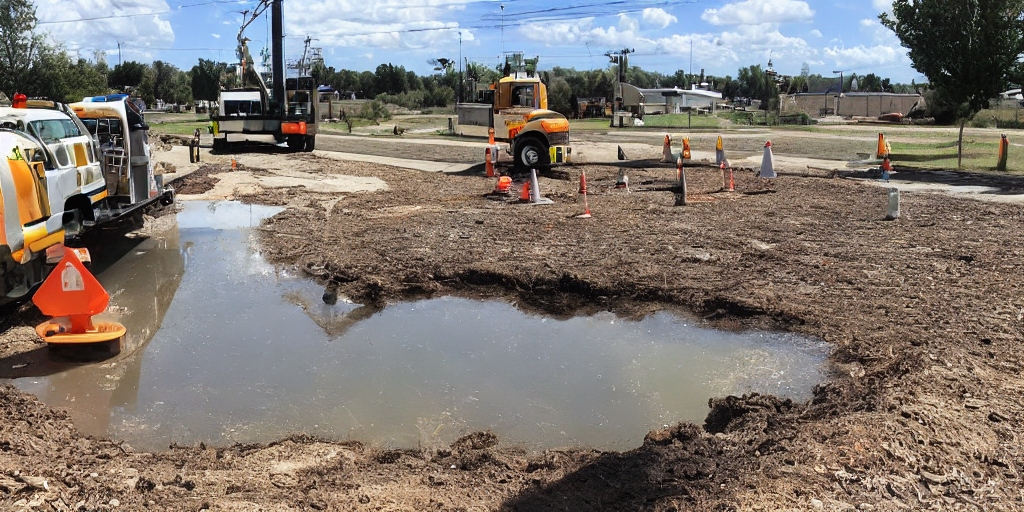Water damage is a homeowner’s nightmare, striking swiftly and leaving a trail of destruction in its wake. Whether it’s a burst pipe, a faulty appliance, or a natural disaster, water leaks can wreak havoc on your property, leading to structural damage, mold growth, and health hazards. In such dire circumstances, water leak restoration becomes paramount to salvage your home and restore normalcy to your life.
Immediate Actions After Water Damage
The first moments after discovering a water leak are crucial. Acting swiftly can minimize the extent of damage and prevent further deterioration. Here are the essential steps to take immediately after water damage strikes:
- Assess the Situation: Determine the source of the leak and shut off the water supply if possible to prevent additional water from entering your home.
- Safety First: Ensure the safety of yourself and your family. Turn off electrical power in affected areas to reduce the risk of electrocution.
- Remove Standing Water: Use towels, mops, or a wet/dry vacuum to remove standing water from floors and surfaces.
- Ventilation: Increase airflow by opening windows and using fans to aid in the drying process and prevent mold growth.
- Document damage: Take photographs or videos of the affected areas for insurance purposes before beginning any cleanup or restoration efforts.
Also Read: Comprehensive Guide to Water Leak Restoration: Tips and Techniques
Understanding Remediation vs. Restoration
Before diving into the water leak restoration process, it’s essential to understand the difference between remediation and restoration:
- Remediation: Focuses on stopping the source of the water, preventing further damage, and mitigating health risks such as mold growth. Remediation aims to stabilize the situation and prepare the area for restoration.
- Restoration: Involves repairing and rebuilding the damaged areas to their pre-loss condition. This includes structural repairs, replacing damaged materials, and restoring the aesthetic appeal of your home.
Efficient Drying Techniques
Once the immediate dangers are addressed, it’s crucial to dry out the affected areas promptly and effectively. Here are some efficient drying techniques to expedite the water leak restoration process:
- Dehumidification: Use dehumidifiers to extract moisture from the air and accelerate the drying process, particularly in enclosed spaces or areas with high humidity levels.
- Air Circulation: Maximize air circulation by using fans strategically to promote evaporation and reduce moisture levels in the environment.
- Professional Equipment: Consider enlisting the help of professional restoration companies equipped with industrial-grade drying equipment such as air movers and moisture meters for thorough drying.
Differentiating Water Mitigation and Damage Restoration
While often used interchangeably, water mitigation and water damage restoration serve distinct purposes in the recovery process:
- Water Mitigation: Focuses on minimizing the initial damage caused by water intrusion. This includes emergency services such as water extraction, drying, and dehumidification to prevent further harm to the property.
- Water Damage Restoration: Involves the comprehensive process of repairing and restoring the property to its pre-loss condition. This encompasses structural repairs, content restoration, and rebuilding damaged areas.
Finding Reliable Restoration Services

When facing water damage, finding the right water leak restoration services is paramount to ensure a swift and thorough recovery. Here are some tips for selecting reliable restoration professionals:
- Experience and Expertise: Look for restoration companies with extensive experience in handling water damage emergencies and a proven track record of successful restoration projects.
- Certifications and Licensing: Verify that the restoration technicians are certified by reputable organizations such as the Institute of Inspection, Cleaning and Restoration Certification (IICRC) and hold the necessary licenses to perform restoration work in your area.
- Insurance Coverage: Ensure that the restoration company is properly insured and can provide liability coverage for any potential damages or injuries that may occur during the restoration process.
- 24/7 Availability: Emergencies can happen at any time, so choose a restoration company that offers round-the-clock emergency services to address water damage promptly.
Also Read: The Essential Guide to Emergency Water Restoration Near Me
Conclusion
In conclusion, water leak restoration is a multi-faceted process that requires prompt action, expertise, and dedication to restore your home to its former glory. By understanding the importance of immediate response, the distinction between remediation and restoration, efficient drying techniques, and the roles of water mitigation and damage restoration, you can navigate the challenges of water damage with confidence. Remember to prioritize safety, document the damage, and enlist the help of reputable restoration professionals to expedite the recovery process and minimize disruptions to your life.










